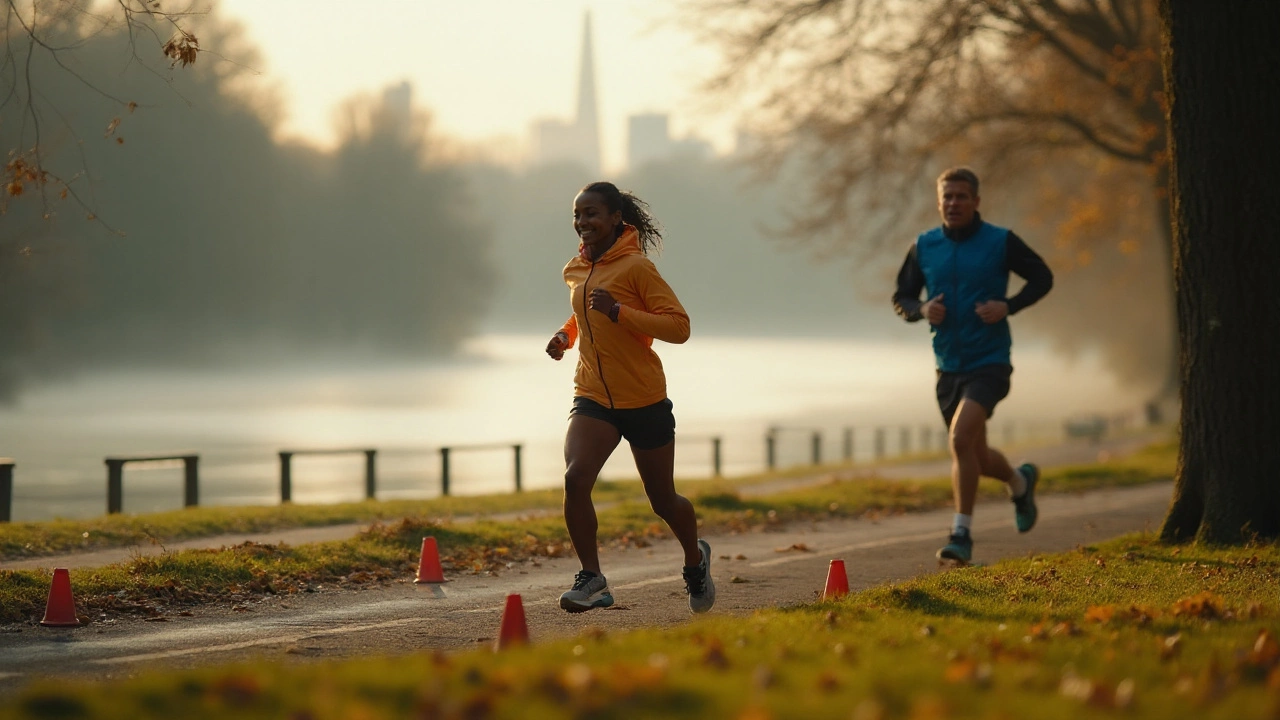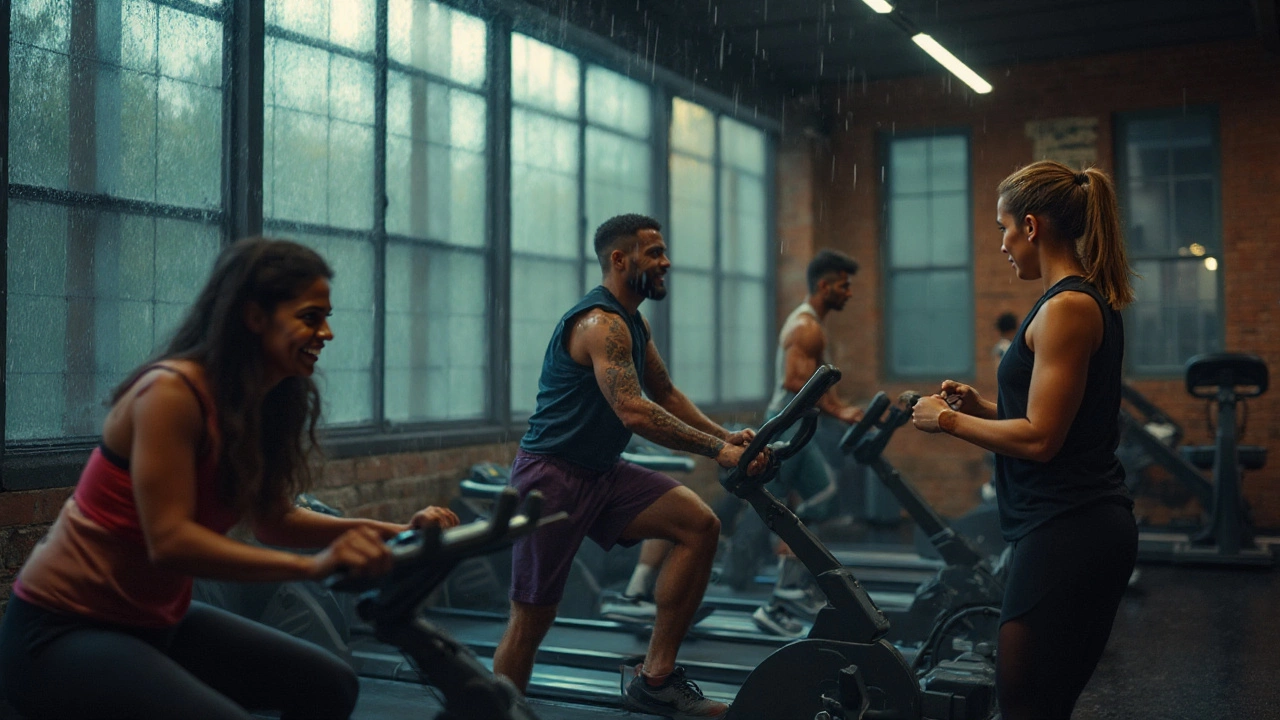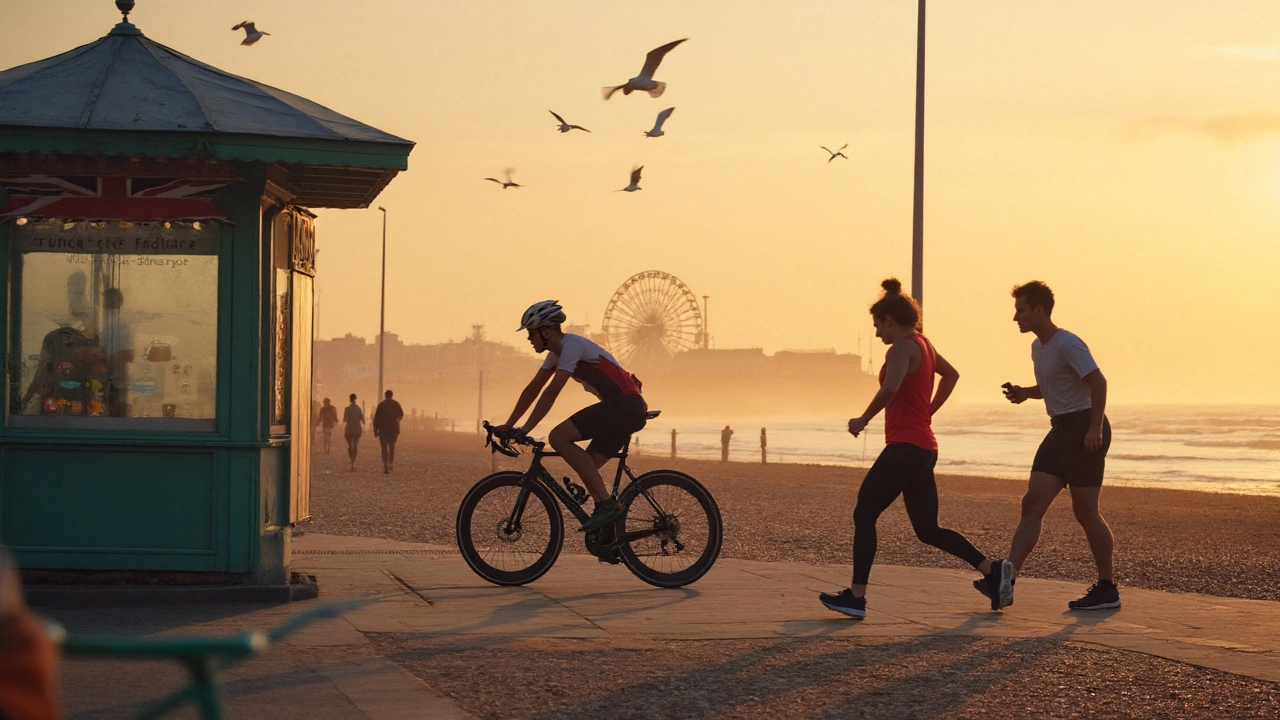
You want a straight answer: what cardio actually drops the most body fat without chewing up your joints or your free time? Here’s the honest bit-there isn’t one magical machine or move. The winner is the method that lets you burn the most energy per week while you can stick to it and recover well. That said, intensity and smart structure matter a lot. I’ll show you exactly how to choose, how hard to go, and how to build a week that works whether you love sprints, prefer long walks, or only have 20 minutes between kids, work, and Auckland rain.
- TL;DR: HIIT burns more calories per minute and preserves fitness with less time; steady cardio is easier to repeat often. Most fat loss comes from total weekly energy burn plus a modest calorie deficit.
- “Best” choice depends on what you’ll do 3-6 days a week: running, cycling, rowing, swimming, uphill walking, jump rope, stairs, or a mix.
- Two to three HIIT sessions a week + 2-4 steady sessions works for most people; add 2 days of strength training to protect lean muscle.
- Use heart-rate zones or the 1-10 effort scale to hit the right intensity. Aim for 200-300 minutes/week if weight loss is the main goal.
- Short on time? 3 x 20-minute HIIT + daily walks can beat longer-but-inconsistent plans.
What Cardio Loses the Most Weight? The Evidence in Plain English
If we’re talking calories per minute, high-intensity interval training (HIIT) and high-output modes like jump rope, fast running, uphill intervals, stair climbing, and vigorous swimming sit at the top. They spike your heart rate, drain your anaerobic and aerobic systems, and keep oxygen use elevated for a bit after (EPOC). That adds up. But if that intensity leaves you wrecked, you won’t repeat it often, and the weekly total suffers. That’s why there’s no single universal winner.
What do good studies say? A 2019 systematic review in the British Journal of Sports Medicine reported HIIT and steady-state (MICT) delivered similar fat loss, with HIIT taking less time. A 2021 meta-analysis in Obesity Reviews found both HIIT and steady-state reduce total fat and waist size; HIIT slightly improved cardiorespiratory fitness more. The American College of Sports Medicine (ACSM) suggests 150-300 minutes/week of moderate cardio or 75-150 minutes/week vigorous for health, and toward the upper end (200-300 min) if weight loss is the focus. In plain terms: consistency and volume win, with intensity as a smart amplifier.
Calories still matter. Creating a daily deficit of 300-500 kcal is a sustainable start; 500-750 kcal leads to faster loss but is harder to maintain. Higher-protein intake (about 1.6-2.2 g/kg body weight), enough fiber (25-35 g/day), and 7-9 hours of sleep help control hunger and keep training quality high. Cardio burns the energy; the rest makes that burn show up on the scale.
Mode matters for your body. Heavier bodies (or cranky knees) usually handle cycling, rowing, swimming, elliptical, and uphill walking better than hard pavement running. If you love running and tolerate it, it’s a time-efficient fat-burner. If you hate it, don’t force it. The best cardio to lose weight is the one you’ll repeat often at the right intensity, not the one a chart says is “king.”
Below is a reality-checked table using MET values from the Compendium of Physical Activities. It shows estimated calories burned in 30 minutes across three body weights. Use it to compare modes, then pick what fits your joints, schedule, and preferences.
| Activity (Intensity) | MET | 30 min @ 70 kg | 30 min @ 90 kg | 30 min @ 110 kg | Notes |
|---|---|---|---|---|---|
| Jump rope (fast) | 12.0 | 441 kcal | 567 kcal | 693 kcal | High impact; tiny footprint; very time-efficient |
| Running ~10 km/h (6 mph) | 9.8 | 360 kcal | 463 kcal | 566 kcal | Requires tolerance to impact; great outdoors/treadmill |
| Stair climber (vigorous) | 9.0 | 331 kcal | 425 kcal | 520 kcal | Low impact; high perceived effort |
| Swimming freestyle (vigorous) | 9.8 | 360 kcal | 463 kcal | 566 kcal | Joint-friendly; skill-dependent |
| Rowing machine (hard) | 8.5 | 312 kcal | 402 kcal | 491 kcal | Posterior-chain heavy; full-body |
| Cycling 20-22 km/h | 8.0 | 294 kcal | 378 kcal | 462 kcal | Low impact; easy to modulate |
| Elliptical (moderate) | 5.5 | 202 kcal | 260 kcal | 318 kcal | Gentle on joints; watch intensity drift |
| Hiking (moderate) | 6.0 | 221 kcal | 284 kcal | 347 kcal | Great for Zone 2; add hills for more burn |
| Walking brisk 5.5-6 km/h | 4.3 | 158 kcal | 203 kcal | 248 kcal | Accessible; stack daily for big weekly totals |
Formula if you like numbers: Calories burned = MET × 3.5 × body weight (kg) ÷ 200 × minutes. Heavier bodies burn more at the same intensity, which is why walking is a very legit fat-loss tool for larger beginners.
Pick Your Cardio: A Simple Decision Guide
Use this to pick your mode and intensity based on your body, schedule, and what you actually enjoy-or at least don’t hate.
- If your knees/hips/ankles complain: favour cycling, rowing, swimming, elliptical, or brisk uphill walking. Intervals are fine-just keep impact low.
- If you’re time-poor: choose short HIIT on a bike, rower, hill sprints, or jump rope. Think 15-25 minutes, start to finish.
- If you’re new or deconditioned: build a base with Zone 2 (easy-moderate pace where you can talk in short sentences), then add gentle intervals.
- If you plateau easily: mix intensities (80% easy, 20% hard) and vary modes across the week to keep your body guessing and joints happy.
- If you live somewhere hilly or windy (hello, Auckland): embrace it-hills are natural intervals; wind adds free resistance on bike or foot.
How to set intensity without fancy tech:
- Rate of Perceived Exertion (RPE) 1-10: Zone 2 is 3-4/10 (breathing faster but can chat). Interval work is 7-9/10 (talking in words, not sentences). Sprints touch 9-10/10.
- Heart rate (quick method): HRmax ≈ 220 − age. Zone 2: 60-70% HRmax. Threshold intervals: 80-90%. Sprints: 90-95%.
- Heart rate (better): Karvonen. HRR = HRmax − resting HR. Zone 2: 60-75% HRR; hard intervals: 80-90% HRR.
Decide by constraints:
- No equipment: walk, hike, stair climbs, hill repeats, jump rope, shuttle runs, shadow boxing rounds.
- One piece of cardio gear at home: pick bike/rower/elliptical and rotate workouts below.
- Gym access: choose 2 modes you like (e.g., bike + rower) and alternate hard/easy days.
- Prefer outdoors: run/walk intervals, cycling, ocean or pool swims, trail hikes with poles for intensity.
Non-negotiables for fat loss:
- 2-3 days of HIIT or tempo work per week are plenty for most. More is not more-recovery drops, hunger spikes.
- Fill the rest with easy mileage (walks, easy rides). These sessions stack calories without wrecking your legs.
- Strength train 2 days/week (squats, hinges, pushes, pulls). You’ll keep muscle and your resting metabolism higher.

Proven Workouts: HIIT, Steady, and Hybrids You Can Start Today
Pick 1-2 from each group for your week. Warm up 5-8 minutes first (ramp up intensity), and cool down 3-5 minutes after.
Time-efficient HIIT (15-25 min door to door):
- Bike or Rower 30/30s: 10 rounds of 30 seconds hard (RPE 8-9), 30 seconds easy. 4-minute easy spin. Repeat the 10 rounds if conditioned.
- Treadmill Hill Sprints: 10 × 20 seconds fast on a 6-8% incline, 100 seconds walk. Keep form tall; step off safely as needed.
- Jump Rope Ladders: 1 min fast / 1 min easy, then 90s fast / 1 min easy, then 2 min fast / 90s easy. Repeat once. Sub low-impact step taps if shins gripe.
- Swim Sets: 10 × 50 m hard with 30-45 s rest, then 200 m easy. Focus on relaxed breathing and long strokes.
Tempo/threshold (comfortably hard, 20-40 min):
- Row 3 × 8 min at RPE 7 (you can say short phrases), 2 min easy between.
- Run 20-30 min at steady hard pace you could hold for 40-50 min max. Keep cadence light; choose flat to rolling terrain.
- Cycle Sweet Spot: 2 × 12-15 min at 85-90% FTP (or HR 80-85% HRR), 5 min easy between.
Steady-state / Zone 2 (low stress, stackable):
- Brisk Walk: 45-60 min where you can talk but feel the effort. Add hills or a weighted pack (5-10% body weight) once joints adapt.
- Elliptical or Spin: 30-60 min with short 15-20 s pick-ups each 5 minutes to keep cadence snappy.
- Swim Continuous: 20-30 min easy freestyle, focus on technique; build to 40 min over weeks.
Hybrids and finishers:
- Bike + Walk Double: 20 min bike intervals in the morning, 30 min evening walk. Splitting sessions can feel easier and curb snacking.
- Strength + Finisher: Lift 30-40 min, then 6-8 rounds of 40 s hard/20 s easy on the rower. Keeps the session tight without wrecking recovery.
Beginner-friendly progressions (4-6 weeks):
- Weeks 1-2: 3-4 days/week. Two 30-40 min walks + one 12-15 min HIIT-lite (8 × 20 s hard/100 s easy on bike).
- Weeks 3-4: 4-5 days/week. Add a 45-60 min walk or easy ride. Upgrade HIIT to 10 × 30/30 on rower or hill.
- Weeks 5-6: 5 days/week. Keep two easy days; add one tempo session (20-25 min comfortably hard). Keep HIIT at 2 sessions max.
Joint-friendly HIIT options:
- Elliptical surges: 12 × 40 s hard / 20 s easy.
- Pool sprints: 10 × 25 m hard / 25 m easy.
- Seated bike sprints: 12 × 20 s all-out / 100 s very easy.
Cheat Sheets: Zones, Weekly Targets, and Progression Rules
Use these rules of thumb to build your week and stay consistent.
Weekly targets for fat loss:
- Minutes: 200-300 minutes total per week across all cardio (mix of easy and hard).
- HIIT dose: 2-3 sessions (15-25 min each). More than 3 often backfires for non-athletes.
- Steps: 7,000-10,000 most days. Walking quietly compiles calories and boosts recovery.
- Strength: 2 sessions (full body). Non-negotiable for muscle retention.
Simple week templates (pick one that fits your life):
- Busy Professional (4 days): Mon HIIT bike 20 min; Tue 30-40 min walk; Thu tempo row 25 min; Sat 60 min hike. Micro-walks on other days.
- Joint-Friendly (5 days): Mon elliptical intervals 18-22 min; Tue 45 min walk; Thu swim sets 25-30 min; Sat 60 min walk with hills; Sun 30 min easy cycle.
- Runner’s Mix (5 days): Mon 30 min easy run; Wed 8-10 × 400 m hard with 200 m jog; Fri 40 min Zone 2 bike; Sun 75 min long walk.
Progression rules:
- 10% rule: Don’t add more than ~10% weekly time or distance. If you’re beat up or sleep-deprived, hold or reduce.
- Hard/easy balance: Never stack more than two hard days in a row. After HIIT, go easy or rest the next day.
- Deload: Every 4th week, reduce volume by ~20-30% to reset joints and motivation.
Fueling and hunger control:
- Protein anchor: 25-40 g protein per meal, 3-4 times/day (roughly 1.6-2.2 g/kg/day). Helps satiety and muscle.
- Carbs around work: A small carb hit (banana/toast) before hard sessions; protein + carbs after. For easy walks, water is fine.
- Hydration: 500-750 ml/hour for sweaty sessions; add electrolytes if hot or swimming long. In humid NZ summers, bump fluids.
Warm-up in five minutes:
- 1 min easy
- 1 min moderate
- 3 × 20 s hard / 40 s easy
Cool-down in three minutes: drop effort to very easy and breathe deep through the nose if you can.
Technique cues that save joints and boost burn:
- Running: cadence 170-180 on flats; land under hips; short stride uphill; tall posture.
- Rowing: legs-drive, hips-open, then pull; 1:2 drive:recovery rhythm; keep shoulders down.
- Cycling: steady cadence 85-95 rpm; hips stable; add resistance, don’t just flail faster.
- Jump rope: elbows tucked; turn from wrists; jump just high enough to clear the rope.
Women-specific tips (from both practice and research):
- In high-hormone phase (luteal), heat tolerance and pacing can feel harder. Pivot to more Zone 2 or swap a HIIT day for tempo if you’re dragging.
- During low-hormone phase (early follicular), many women feel best for sprints and heavy lifts. If that’s you, schedule HIIT there.
- If postpartum or breastfeeding, prioritize joint-friendly modes, core stability, and progressive loading; get clearance from your provider.

FAQ and Fixes for Real-World Hurdles
Is running the best for weight loss? It’s one of the most calorie-dense per minute if you can handle the impact and pace. But cycling, rowing, swimming, jump rope, and stair work can match it across a week because you’ll likely recover faster and repeat them more.
How fast can I lose weight with cardio? A realistic pace is 0.25-0.75 kg per week. That’s roughly a 250-750 kcal/day deficit from diet and activity combined. Faster loss is possible short term but tends to rebound.
Do I need HIIT every day? No. Two or three HIIT days are enough for most. Fill the gaps with easy cardio and steps. Daily HIIT often leads to burnout, nagging injuries, and snack attacks.
Is fasted cardio better? Not for fat loss over weeks. Multiple controlled studies show total fat loss ends up similar when calories/protein are matched. Choose the time of day you can repeat and perform well.
Does walking even help? Big time. It’s low stress, so you can stack hours. Add hills, a backpack, or longer routes to nudge the burn. For many people, walking is the backbone of sustainable fat loss.
What about EPOC-afterburn? It’s real but smaller than social media implies. HIIT may add 6-15% extra calories post-workout. Useful, not magic. The bulk of your burn is during the work and in total weekly activity.
How many calories to lose 1 kg? Roughly 7,700 kcal. Think of it as 300-500 kcal/day for several weeks, instead of trying to torch it all in two monster sessions.
Can I target belly fat with cardio? Spot reduction doesn’t work. You’ll lose fat with a whole-body pattern; belly tends to be last to leave. Consistency + deficit + strength training tightens the midsection best.
Are wearables accurate for calorie burn? They’re decent for heart rate, not great for calories. Use them for trends, not absolutes. Track progress with body weight trends, tape measurements, clothes fit, and photos.
Best time to do cardio? The time you can repeat. If you want a small edge, late morning to afternoon often feels stronger for performance. Morning sessions can curb late-day snack attacks. Pick your battle.
Bad knees-am I stuck? No. Try cycling, rowing, swimming, elliptical, sled pushes, or incline walking. Keep strides short, cadences smooth, and build slowly.
What if I only have 10-15 minutes? Go hard, then stop. Example: 12 × 30 s hard / 30 s easy on a bike; or EMOM (every minute on the minute) 40 s fast, 20 s easy for 12-15 minutes. Add a short walk later to top up.
Hitting a plateau? Check these first: sleep (7+ hours?), protein (1.6-2.2 g/kg?), steps (7-10k?), booze (cut it), and hidden calories (oils, dressings, bites). Then add 20-40 min/week of easy cardio or 1-2 extra very short HIIT blocks.
Rainy/windy week? Do intervals indoors (bike/rower/elliptical), or run stairwells. If you’re in a small flat, jump rope, shadow box, or do step-ups on a sturdy box.
Strength training vs. more cardio? For fat loss and a better look at the end, you need both. If you must choose on a busy day, lift first, then finish with a short HIIT. Protect the muscle that makes you a better calorie burner.
Safety red flags: sharp joint pain, chest pain, dizziness that doesn’t fade, or swelling that gets worse after rest. Ease back and see a professional if symptoms persist.
Next steps and troubleshooting by persona:
- Time-crunched parent: 3 × 20-min HIIT (Mon/Wed/Fri) + 20-30 min walks on Tue/Thu/Sat. Keep Sunday as play-day with the kids (hike, bike, beach walk).
- Beginner with 20+ kg to lose: 4-5 × 40-60 min brisk walks (add hills), 1-2 × 15-min low-impact HIIT (bike or pool). Strength 2×/week with machines or bodyweight.
- Desk-bound pro: Set a 45-min daily movement block in your calendar. Two days HIIT bike/row; two days 45-min Zone 2; a weekend hike. Stand and stretch every 60-90 minutes.
- Runner with sore shins: Swap two runs for cycling/rowing for 3-4 weeks, keep one short tempo run, add calf raises and foot strength. Return to running volume slowly (10% rule).
- 50+ returning to exercise: Prioritize low-impact modes, start with Zone 2, add one HIIT day after 2-3 weeks. Get blood pressure, meds, and any cardiac history cleared.
If you want a simple checklist to keep you honest each week, use this:
- [ ] 2-3 HIIT sessions done (15-25 min)
- [ ] 2-4 easy sessions done (30-60 min)
- [ ] 2 strength sessions done
- [ ] 7,000-10,000 steps on 5+ days
- [ ] Protein hit in each meal; water bottle always within reach
- [ ] Sleep: in bed 7-9 hours on 5+ nights
Wrap your head around this one-liner and you’ll be fine: pick a mode your joints like, push hard 2-3 times a week, move easily most other days, lift a couple of times, and eat like you respect your future self. Do that for 8-12 weeks and the mirror, the tape, and your clothes will tell the story.
